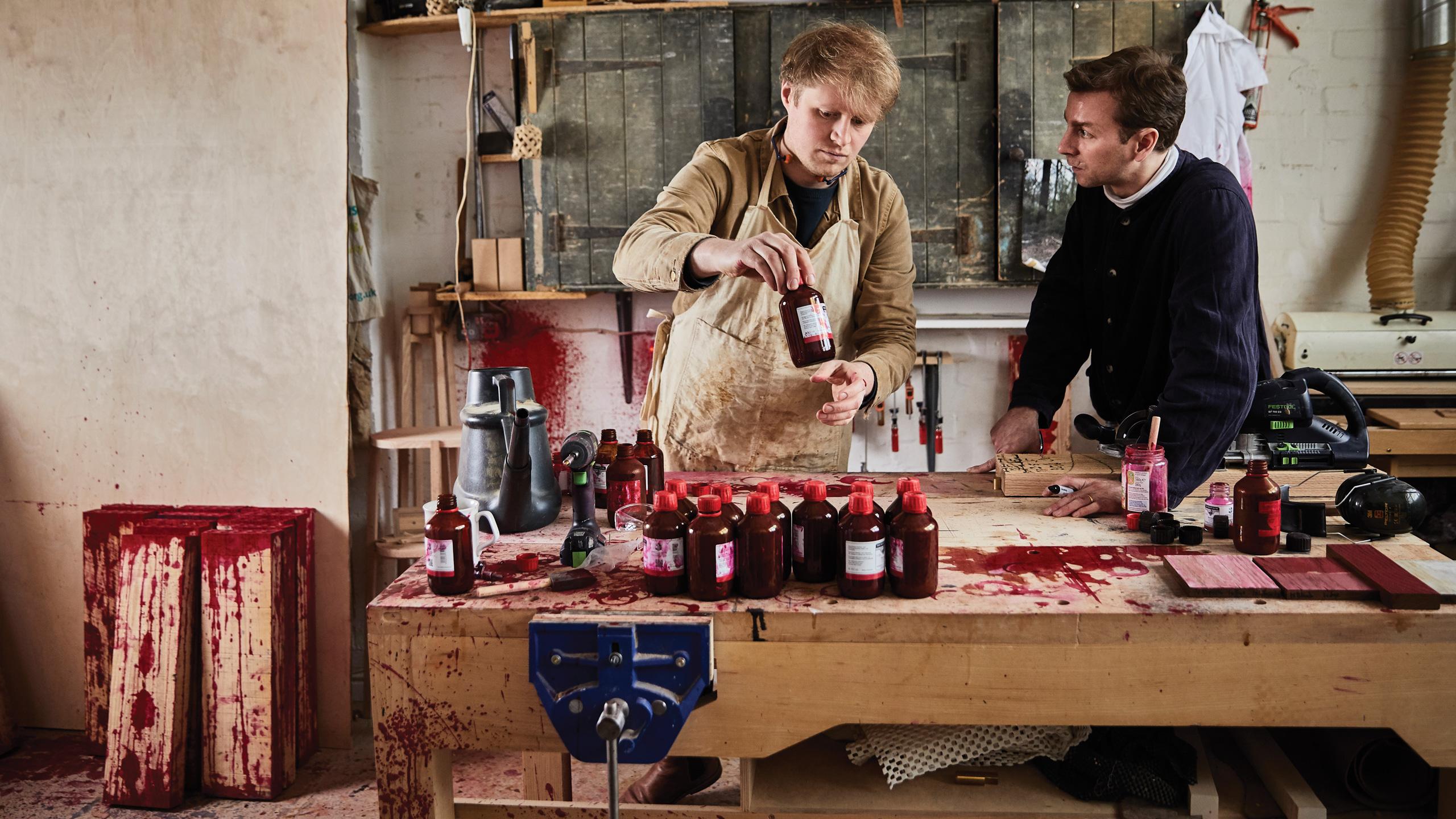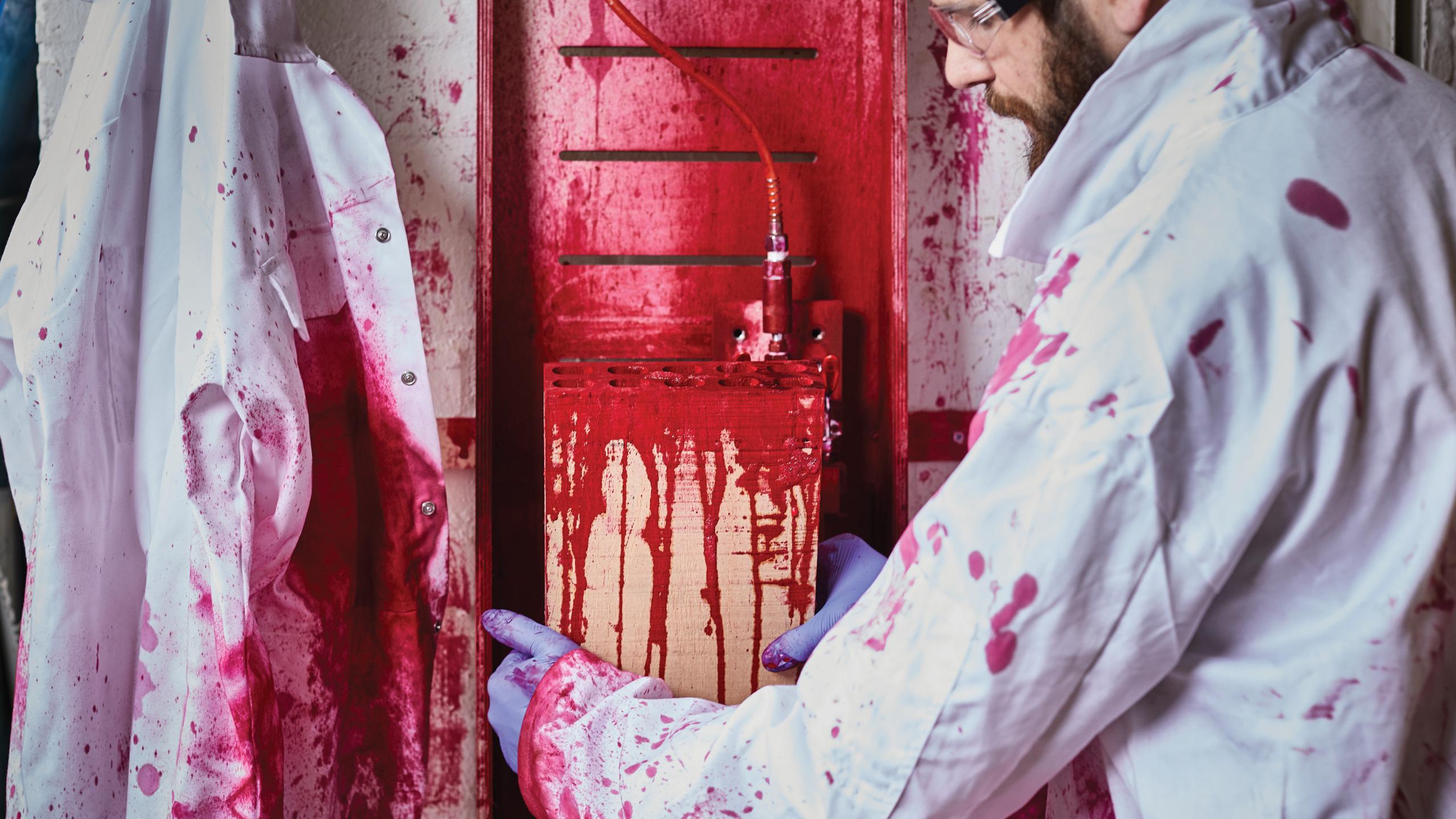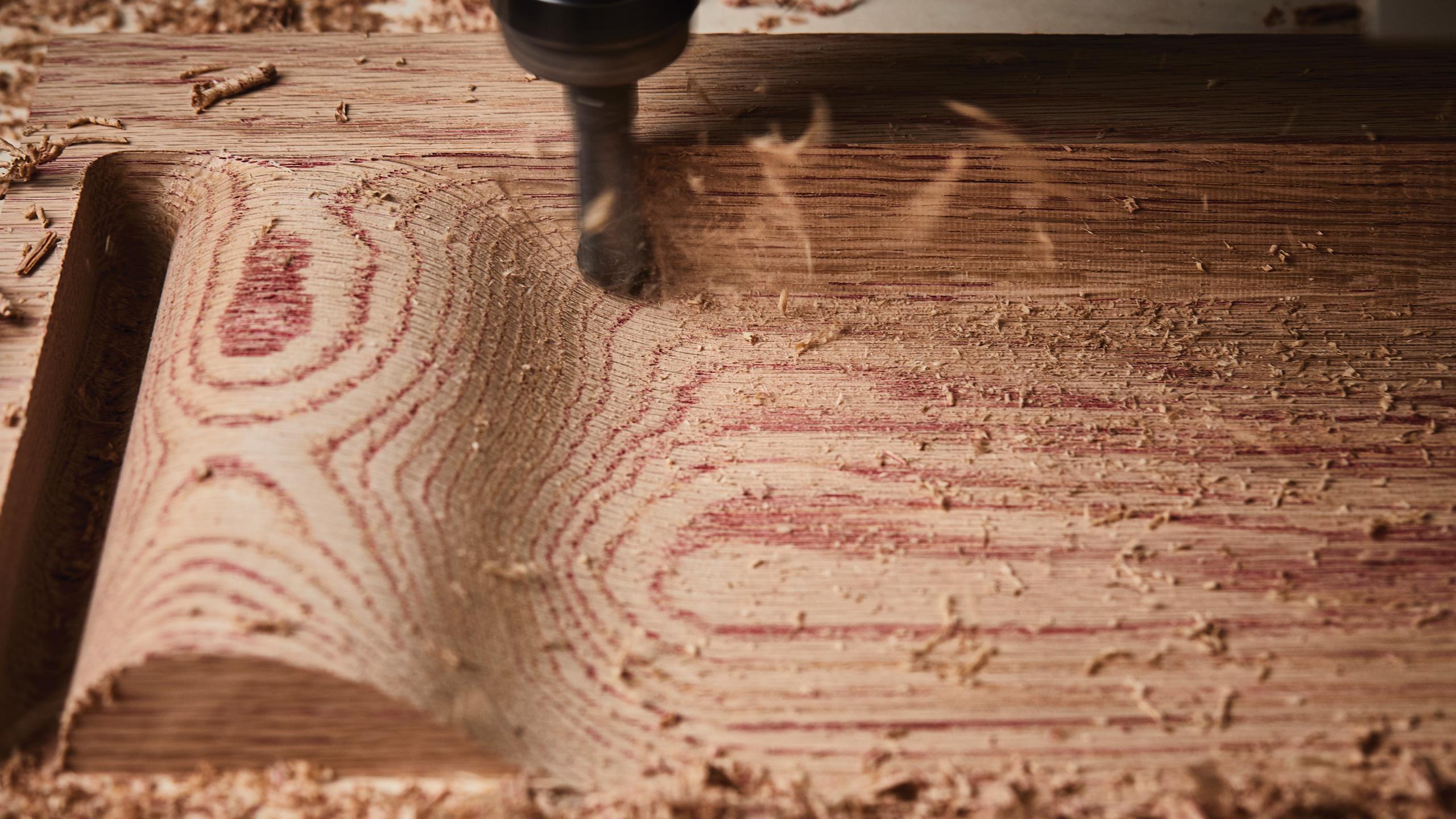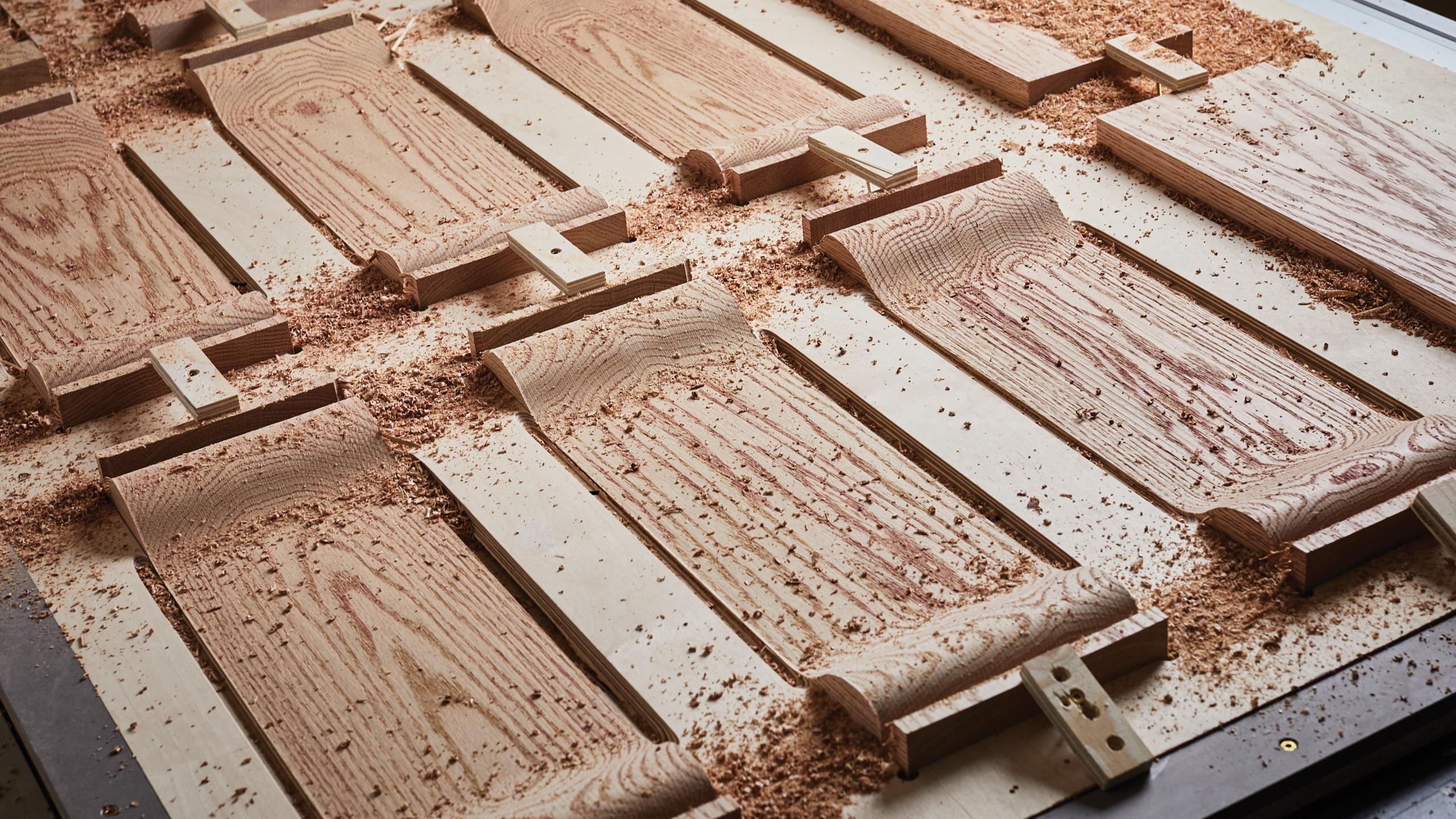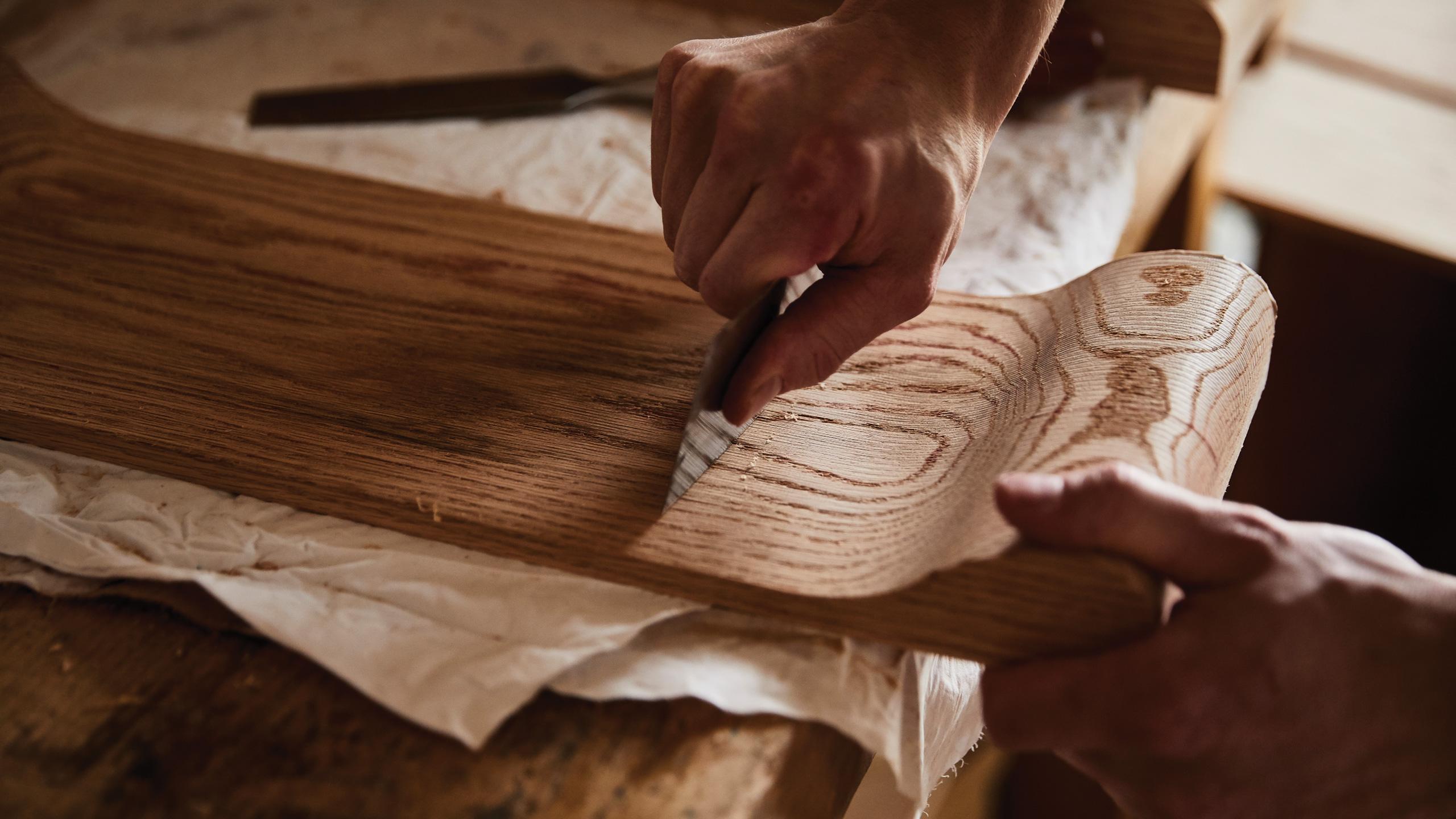MAKING
Furniture designer-maker Sebastian Cox of Sebastian Cox Ltd delights in exploring the potential of timber. He takes it to its apparent technical and creative limits. Then he pushes the boundaries that bit further to see what happens. The results have already been remarkable. He has steamed and bent wood into incredible forms and created natural mouldable furniture by blending mycelium fungus with green wood waste and training it to grow around a timber template.
Never before, however, has Sebastian Cox Ltd pressure injected red calligraphy ink into the inner structure of American red oak, so that it works its way to the surface to pick out and enhance the beautiful grain – until now. The objective of this timber transfusion was to create the raw material for a 3m diameter circular bar, one of the 2019 Wallpaper* Handmade design pieces for the Milan design week, the famed Fuorisalone.
The timber is hugely popular in the U.S., employed for everything from flooring to furniture, staircases to cladding. It can also be used structurally and, given a protective treatment, in exterior applications.
“It’s robust and works and machines well and it looks beautiful. It’s said people might be deterred by the word red. But at most it’s a gentle russet – it’s a warm, inviting wood.” said Sebastian Cox. “We wanted to accentuate the natural patterning of the wood, but in a subtle light-touch way.”
The concept of injecting colour into the actual fibres of the timber, he added, came about during the best part of a month spent just examining, handling and working the material. “We became fixated on the size of the xylum and phloem vessels. They’re exceptionally large, with only sycamore and beech in my knowledge coming close. You can virtually count the number of pores in the end grain. It doesn’t compromise the strength of the wood, but it does make it porous and so unsuitable for some applications white oak is used for – whiskey barrels, for example!”
Once the creative team had decided on the approach, however, it wasn’t just a case of filling a giant hypodermic with red ink. There was some trial and error.
“We considered using wood dye, but it was too viscous to pass easily through the vessels, so we opted for the water-based calligraphy ink, which also gives a richer, more intense red,” said Sebastian. “We also tried impregnating it in a vacuum bag press, but the ink just spilled out.”
After the injection with compressed air method was established, there were also a few issues with getting the pressure right. The evidence is there to see on the Woolwich workshop walls in the shape of red ink ‘blood spatters’. “Eventually we settled on 10 bar and found the ink worked its way through the length and width of the boards most evenly if we injected it into shallow, routed ‘domino’ recesses in the ends,” said Sebastian.
The Blushing Bar comprises 60 oak front sections and 120 leg components, but the making team became very adept at the process and were able to inject a 650mm long, two inch (or eight quarter in American hardwood parlance) piece in just five minutes. And a video will be shown alongside the bar in Milan to demonstrate to visitors just how it was done. The ink finds its easiest route through the timber, which means it migrates naturally to the less dense spring growth. The result is that the fine rings of this material are highlighted in red on the surface, while the denser summer growth is left uncoloured. The effect is accentuated by using crown cut boards, rather than quarter sawn, where the end grain is more pronounced and the contrast between the spring and summer material stands out more clearly.
After colouring, the timber was dried to a stable 10% moisture content before being shaped and machined. For ultra precision this included working the curved pieces on a CNC machine, a tool which might come as a something of a surprise to find at such a craft-oriented operation. The bar is made up of 10 interlocking wedge-shaped sections, celebrating 10 years of Wallpaper Handmade design collaborations and creating a perfect ‘O’.
The individual bar sections also each performs a different function. There’s a chopping and preparation area, a storage unit for bottles, even a sink in water-resistant, thermo-treated red oak, further highlighting the versatility of the timber. Each section was set for two weeks in specially designed jigs, which were, said Merlin, ‘as much things of beauty as the finished bar itself’.
The last stage of the process was to apply a very lightly pigmented, specially mixed oil blend to the wood to subtly emphasise further the contrast between inked and naturally coloured areas.
“Like most of our work, it’s not designed to be a one off,” Cox said. “We’re confident the inking process is scalable and could go into commercial application.”
